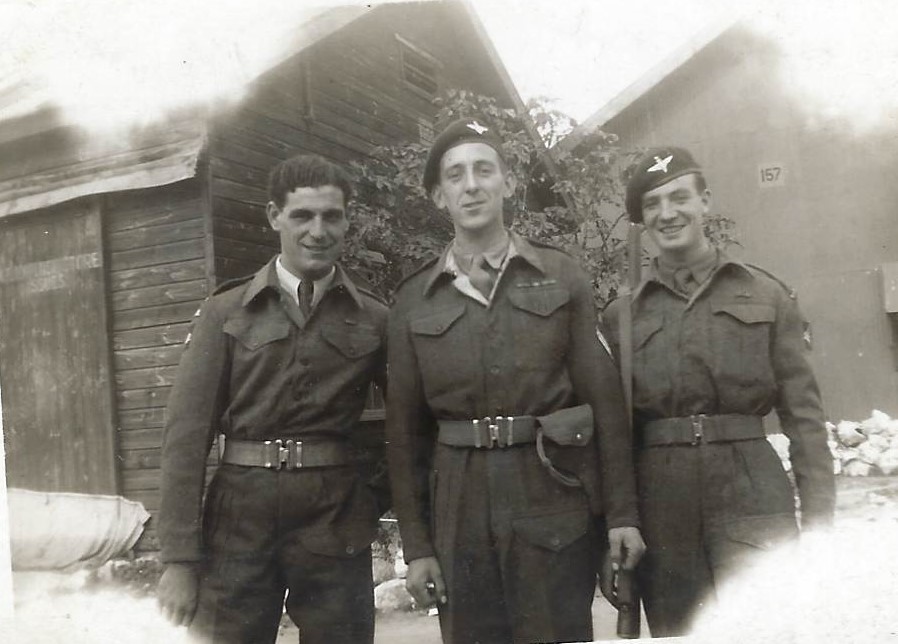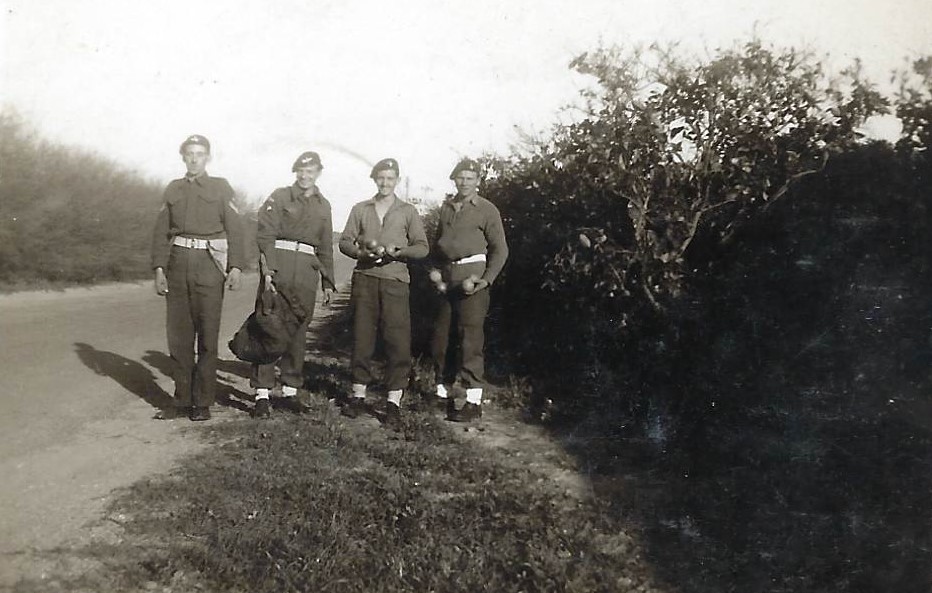By Vince Leonard

We were up at 0600 hrs. every morning and allotted jobs to do in the Barracks but fortunately this did not involve many parades and inspections. There was limited training and we were primarily and emergency reserve, not leaving the barracks except to conduct security patrols. Jumping was not anticipated in Palestine and no jumps were made while I was there. Nevertheless, I had never had so much money as, with half a crown (25p) a day parachute allowances and a couple of overseas allowances, I was earning around £10 a week (usual National Servicemen’s pay was £1 7s 6p a week!)
When we were deployed on patrols they consisted of a full (Para) stick of 10-20 men; a brick (4-6 men) or very occasionally, a half-brick (2-3 men). The patrols were intended to reassure and protect the local population from terrorist activity. The groups which comprised the main threat were the ‘Lehi’ and ‘Irgun’ or Stern Gang as they were better known. Most of our attention was concentrated on Hedera and Daliyat al-Karmel, as it was common practice in these towns for terrorists to fire indiscriminately into the Souk (market).
Briefings before patrols were conducted by the patrol leader, invariably a Corporal or Sergeant, with local intelligence being supplied by the Palestine Police. Each foot patrol was armed with Lee-Enfield .303 rifles or Sten guns and Bren guns (one for every four men). Everyone carried a minimum of four HE grenades. Unlike today, there was only one Medic. (possibly two) for the Battalion and we Para’s were only given basic first aid training and supplied with a single Field dressing. Prior to leaving for Palestine we had been issued with ’44 pattern webbing which was more comfortable than the old ‘Blanco’ kit issued in training, and it enabled more equipment (rations, mess tins, water, spade etc.) to be carried.
Atrocities continued in the Haifa district in 1947 with the derailing of the Cairo to Haifa train at Rehovoth where survivors were machine gunned and, on May 31st. the Haifa oil refinery was blown up, turning the sky black for a week or more. Attacks on both British personnel and Arabs by the Zionist groups were now commonplace, but there were also frequent attacks involving Palestinian terrorists. The British were now starting to find themselves in the middle of a civil-war and this first post-war policing, outside Europe, was spiralling out of control.
However, we were more involved in local activities, such as the occasional cordon-and-search operation, which took place in the countryside, rather than the towns. On these occasions, fresh oranges and grapefruit (which were very sweet) could be scrumped from trees, a novelty after rationing at home and which we regarded (as generations of soldiers before and have done since), as the soldiers due.

Pte. Leonard V.J. second from left holding the bag.
We had to deal with the occasional demonstration and even the odd riot, but they did not occur often, and fire was returned only when we were fired upon. We did not have any baton-guns in those days and so our tactics for quashing riots involved firing into the ground to dislodge chips of stone to cut below knee level. The rioters took advantage of our sense of fair-play and would send women and girls into the front line to ensure minimum force was used and then shoot at us from behind this ‘human shield’.
However, we were nothing if not innovative and I remember that when girls were participating in a riot in a market, which I think was Cameron Square, we had a Bren Gun Carrier that had been converted to use as a flame-thrower, this was filled with Derv-oil and sprayed into the crowd. Of course, it got into their hair which they did not like and so they dispersed allowing us to get to the real troublemakers at the back! Overall we did not get attacked often because we did not take much nonsense and, of course, there were fewer cameras about in post-war Palestine - both a blessing and a curse!

Another task we were allocated was the protection of Jewish convoys which were bringing displaced persons from Europe to resettlement centres. We quite enjoyed these duties as they involved a trip into the country which was safe and got us a free meal of egg and chips!
The vehicles used for transport on these occasions were Bedford QL 3 ton lorries and we would stop at the rendezvous point with the convoy, usually a place called the ‘Half Way House’ between Haifa and Jerusalem, here we would sit and eat turning a blind eye whilst some of our fuel which was surreptitiously siphoned-off to fuel the refugee convoy.
Article copyright: Vince Leonard.
Provided by Roger Brown

Comments on A Para in Palestine: Part 2. Daily life.